How to write a fantastic thesis introduction (+15 examples)
The thesis introduction, usually chapter 1, is one of the most important chapters of a thesis. It sets the scene. It previews key arguments and findings. And it helps the reader to understand the structure of the thesis. In short, a lot is riding on this first chapter. With the following tips, you can write a powerful thesis introduction.
Disclosure: This post may contain affiliate links, which means I may earn a small commission if you make a purchase using the links below at no additional cost to you . I only recommend products or services that I truly believe can benefit my audience. As always, my opinions are my own.

Elements of a fantastic thesis introduction
Open with a (personal) story, begin with a problem, define a clear research gap, describe the scientific relevance of the thesis, describe the societal relevance of the thesis, write down the thesis’ core claim in 1-2 sentences, support your argument with sufficient evidence, consider possible objections, address the empirical research context, give a taste of the thesis’ empirical analysis, hint at the practical implications of the research, provide a reading guide, briefly summarise all chapters to come, design a figure illustrating the thesis structure.
An introductory chapter plays an integral part in every thesis. The first chapter has to include quite a lot of information to contextualise the research. At the same time, a good thesis introduction is not too long, but clear and to the point.
A powerful thesis introduction does the following:
- It captures the reader’s attention.
- It presents a clear research gap and emphasises the thesis’ relevance.
- It provides a compelling argument.
- It previews the research findings.
- It explains the structure of the thesis.
In addition, a powerful thesis introduction is well-written, logically structured, and free of grammar and spelling errors. Reputable thesis editors can elevate the quality of your introduction to the next level. If you are in search of a trustworthy thesis or dissertation editor who upholds high-quality standards and offers efficient turnaround times, I recommend the professional thesis and dissertation editing service provided by Editage .
This list can feel quite overwhelming. However, with some easy tips and tricks, you can accomplish all these goals in your thesis introduction. (And if you struggle with finding the right wording, have a look at academic key phrases for introductions .)
Ways to capture the reader’s attention
A powerful thesis introduction should spark the reader’s interest on the first pages. A reader should be enticed to continue reading! There are three common ways to capture the reader’s attention.
An established way to capture the reader’s attention in a thesis introduction is by starting with a story. Regardless of how abstract and ‘scientific’ the actual thesis content is, it can be useful to ease the reader into the topic with a short story.
This story can be, for instance, based on one of your study participants. It can also be a very personal account of one of your own experiences, which drew you to study the thesis topic in the first place.
Start by providing data or statistics
Data and statistics are another established way to immediately draw in your reader. Especially surprising or shocking numbers can highlight the importance of a thesis topic in the first few sentences!
So if your thesis topic lends itself to being kick-started with data or statistics, you are in for a quick and easy way to write a memorable thesis introduction.
The third established way to capture the reader’s attention is by starting with the problem that underlies your thesis. It is advisable to keep the problem simple. A few sentences at the start of the chapter should suffice.
Usually, at a later stage in the introductory chapter, it is common to go more in-depth, describing the research problem (and its scientific and societal relevance) in more detail.
You may also like: Minimalist writing for a better thesis
Emphasising the thesis’ relevance
A good thesis is a relevant thesis. No one wants to read about a concept that has already been explored hundreds of times, or that no one cares about.
Of course, a thesis heavily relies on the work of other scholars. However, each thesis is – and should be – unique. If you want to write a fantastic thesis introduction, your job is to point out this uniqueness!
In academic research, a research gap signifies a research area or research question that has not been explored yet, that has been insufficiently explored, or whose insights and findings are outdated.
Every thesis needs a crystal-clear research gap. Spell it out instead of letting your reader figure out why your thesis is relevant.
* This example has been taken from an actual academic paper on toxic behaviour in online games: Liu, J. and Agur, C. (2022). “After All, They Don’t Know Me” Exploring the Psychological Mechanisms of Toxic Behavior in Online Games. Games and Culture 1–24, DOI: 10.1177/15554120221115397
The scientific relevance of a thesis highlights the importance of your work in terms of advancing theoretical insights on a topic. You can think of this part as your contribution to the (international) academic literature.
Scientific relevance comes in different forms. For instance, you can critically assess a prominent theory explaining a specific phenomenon. Maybe something is missing? Or you can develop a novel framework that combines different frameworks used by other scholars. Or you can draw attention to the context-specific nature of a phenomenon that is discussed in the international literature.
The societal relevance of a thesis highlights the importance of your research in more practical terms. You can think of this part as your contribution beyond theoretical insights and academic publications.
Why are your insights useful? Who can benefit from your insights? How can your insights improve existing practices?

Formulating a compelling argument
Arguments are sets of reasons supporting an idea, which – in academia – often integrate theoretical and empirical insights. Think of an argument as an umbrella statement, or core claim. It should be no longer than one or two sentences.
Including an argument in the introduction of your thesis may seem counterintuitive. After all, the reader will be introduced to your core claim before reading all the chapters of your thesis that led you to this claim in the first place.
But rest assured: A clear argument at the start of your thesis introduction is a sign of a good thesis. It works like a movie teaser to generate interest. And it helps the reader to follow your subsequent line of argumentation.
The core claim of your thesis should be accompanied by sufficient evidence. This does not mean that you have to write 10 pages about your results at this point.
However, you do need to show the reader that your claim is credible and legitimate because of the work you have done.
A good argument already anticipates possible objections. Not everyone will agree with your core claim. Therefore, it is smart to think ahead. What criticism can you expect?
Think about reasons or opposing positions that people can come up with to disagree with your claim. Then, try to address them head-on.
Providing a captivating preview of findings
Similar to presenting a compelling argument, a fantastic thesis introduction also previews some of the findings. When reading an introduction, the reader wants to learn a bit more about the research context. Furthermore, a reader should get a taste of the type of analysis that will be conducted. And lastly, a hint at the practical implications of the findings encourages the reader to read until the end.
If you focus on a specific empirical context, make sure to provide some information about it. The empirical context could be, for instance, a country, an island, a school or city. Make sure the reader understands why you chose this context for your research, and why it fits to your research objective.
If you did all your research in a lab, this section is obviously irrelevant. However, in that case you should explain the setup of your experiment, etcetera.
The empirical part of your thesis centers around the collection and analysis of information. What information, and what evidence, did you generate? And what are some of the key findings?
For instance, you can provide a short summary of the different research methods that you used to collect data. Followed by a short overview of how you analysed this data, and some of the key findings. The reader needs to understand why your empirical analysis is worth reading.
You already highlighted the practical relevance of your thesis in the introductory chapter. However, you should also provide a preview of some of the practical implications that you will develop in your thesis based on your findings.
Presenting a crystal clear thesis structure
A fantastic thesis introduction helps the reader to understand the structure and logic of your whole thesis. This is probably the easiest part to write in a thesis introduction. However, this part can be best written at the very end, once everything else is ready.
A reading guide is an essential part in a thesis introduction! Usually, the reading guide can be found toward the end of the introductory chapter.
The reading guide basically tells the reader what to expect in the chapters to come.
In a longer thesis, such as a PhD thesis, it can be smart to provide a summary of each chapter to come. Think of a paragraph for each chapter, almost in the form of an abstract.
For shorter theses, which also have a shorter introduction, this step is not necessary.
Especially for longer theses, it tends to be a good idea to design a simple figure that illustrates the structure of your thesis. It helps the reader to better grasp the logic of your thesis.
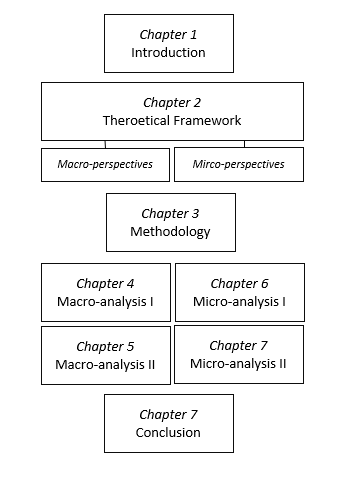
Master Academia
Get new content delivered directly to your inbox.
Subscribe and receive Master Academia's quarterly newsletter.
The most useful academic social networking sites for PhD students
10 reasons not to do a master's degree, related articles.

Theoretical vs. conceptual frameworks: Simple definitions and an overview of key differences

How to deal with procrastination productively during thesis writing

How to write a unique thesis acknowledgement (+ FAQs)

75 linking words for academic writing (+examples)

How To Write A Thesis Introduction Chapter
Crafting the introductory chapter of a thesis can be confusing. If you are feeling the same, you are the at right place.
This post will explore how you can write a thesis introduction chapter, by outlining the essential components of a thesis introduction. We will look at the process, one section at a time, and explain them to help you get a hang of how to craft your thesis introduction.
How To Write A Good Thesis Introduction?
The opening section of a thesis introduction sets the stage for what’s to come, acting as a crucial hook to capture the reader’s attention.
Unlike the broader strokes found in the table of contents, this initial foray into your research is where you must distill the essence of your thesis into a potent, digestible form.
A skillful introduction begins with a concise preview of the chapter’s terrain, delineating the structure of the thesis with a clarity that avoids overwhelming the reader.
This is not the stage for exhaustive details; rather, it’s where you prime the reader with a snapshot of the intellectual journey ahead.
In crafting this segment, insiders advise adhering to a quartet of foundational sentences that offer an academic handshake to the reader.
First Section: I ntroduces the broad field of research, such as the significance of organisational skills development in business growth.
Second Section: Narrows the focus, pinpointing a specific research problem or gap — perhaps the debate on managing skill development in fast-paced industries like web development.
Third Section: Clearly state the research aims and objectives, guiding the reader to the ‘why’ behind your study. Finally, a sentence should outline the roadmap of the introduction chapter itself, forecasting the background context, research questions, significance, and limitations that will follow.
Such a calibrated approach ensures that every element from the research objective to the hypothesis is presented with precision.
This method, a well-guarded secret amongst seasoned researchers, transforms a mundane introduction into a compelling entrée into your dissertation or thesis.
Background To The Study
This section sets the tone for the research journey ahead. The goal here is to capture the reader’s attention by threading relevant background information into a coherent narrative that aligns with the research objectives of the thesis.
To write a good thesis introduction, one must carefully describe the background to highlight the context in which the research is grounded.
This involves not just a literature review but a strategic presentation of the current state of research, pinpointing where your work will wedge itself into the existing body of knowledge.
For instance, if the research project focuses on qualitative changes in urban planning, the introduction should spotlight key developmental milestones and policy shifts that foreground the study’s aims and objectives.
When writing this section, articulate the focus and scope of the research, ensuring the reader grasps the importance of the research questions and hypothesis.
This section must not only be informative but also engaging. By the end of the introductory chapter, the reader should be compelled to continue reading, having grasped a clear and easy-to-understand summary of each chapter that will follow.
It’s a good idea to address frequently asked questions and to clearly state any industry-specific terminology, assuming no prior expertise on the reader’s part.
This approach establishes a solid foundation for the rest of the thesis or dissertation, ensuring the reader is well-prepared to dive into the nuances of your research project.
Research Problem
Crafting the nucleus of your thesis or dissertation hinges on pinpointing a compelling research problem. This step is crucial; it is the keystone of a good thesis introduction chapter, drawing the reader’s attention and setting the stage for the rest of your thesis.

A well-defined research problem addresses a gap in the existing literature, underscored by a qualitative or quantitative body of research that lacks consensus or is outdated, especially in rapidly evolving fields.
Consider the dynamic sphere of organizational skills development. Established research might agree on strategies for industries where skills change at a snail’s pace.
However, if the landscape shifts more quickly—take web development for example, where new languages and platforms emerge incessantly—the literature gap becomes evident.
Herein lies the research problem: existing strategies may not suffice in industries characterized by a swift knowledge turnover.
When writing your introduction, your goal is to clearly state this gap. A great thesis introduction delineates what is known, what remains unknown, and why bridging this chasm is significant.
It should illuminate the research objectives and questions, laying out a roadmap for the reader in a language that’s clear and easy to understand, regardless of their familiarity with the topic.
You’ll be able to capture and maintain the reader’s interest by effectively communicating why your research matters—setting the scene for your hypothesis and subsequent investigation.
Remember, a good thesis introduction should not only provide background information but also articulate the focus and scope of the study, offering a preview of the structure of your thesis.
Research Aims, Objectives And Questions
This pivotal section lays out the foundation by providing relevant background information, but it is the articulation of research aims, objectives, and questions that clarifies the focus and scope of your study.
The research aim is the lighthouse of your thesis, illuminating the overarching purpose of your investigation.
For instance, a thesis exploring skills development in fast-paced industries might present an aim to evaluate the effectiveness of various strategies within UK web development companies. This broad goal sets the direction for more detailed planning.
Research objectives drill down into specifics, acting as stepping stones toward achieving your aim. They are the tangible checkpoints of your research project, often action-oriented, outlining what you will do.
Examples might include identifying common skills development strategies or evaluating their effectiveness. These objectives segment the monumental task into manageable portions, offering a clear and easy way to write a structured pathway for the research.

Equally critical are the research questions, which translate your objectives into inquiries that your thesis will answer. They narrow the focus even further, dictating the structure of the thesis.
For instance:
- “What are the prevalent skills development strategies employed by UK web development firms?”
- “How effective are these strategies?”
Such questions demand concrete responses and guide the reader through the rest of the thesis.
Significance Of The Study
The “Significance of the Study” section within the introduction chapter of your thesis or dissertation holds considerable weight in laying out the importance of your research.

This segment answers the pivotal question: “Why does this research matter?” It is strategically placed after the background information and literature review to underscore the contribution your study makes to the existing body of research.
In writing this section, you’ll be able to capture the reader’s attention by clearly stating the impact and added value your research project offers.
Whether it’s a qualitative or quantitative study, the significance must be articulated in terms of:
- Theoretical
- Academic, and
- Societal contributions.
For instance, it may fill gaps identified in the literature review, propose innovative solutions to pressing problems, or advance our understanding in a certain field.
A good thesis introduction will succinctly convey three main things: the research objective, the hypothesis or research questions, and the importance of your research.
It’s a good idea to provide your reader with a roadmap, foreshadowing the structure of the thesis and offering a summary of each chapter, thus enticing the reader to continue reading.
When you write the introduction section, it should also serve as a concise synopsis of the focus and scope of your research.
It’s often beneficial to include examples of introductions that clearly state the research objectives and questions, offering a snapshot of the whole thesis, and setting the stage for the rest of your thesis.
Limitations Of The Study
A thorough thesis introduction lays out specific research objectives and questions, yet it also sheds light on the study’s inherent boundaries. This is the purpose of the Limitation of The Study section.
The limitations section is not a confession of failure; instead, it’s a good idea to see it as demonstrating academic maturity.
Here, you clearly state the parameters within which the research was conducted.
For instance, a qualitative study might face scrutiny for subjectivity, or a quantitative one for potentially oversimplifying complexities. Other common constraints include the scope—perhaps focusing on a narrow aspect without considering variable interplay—resources, and generalizability.
For example, a study concentrated on a specific industry in Florida may not hold water in a different context, for example in Tokyo, Japan.
It’s essential to write this section with transparency. A good thesis introduction doesn’t shy away from limitations. Instead, it captures the reader’s attention by laying them out systematically, often in a dedicated paragraph for each chapter.
This honesty allows the reader to understand the research’s focus and scope while providing a clear and easy-to-follow structure of the thesis.
This approach also serves to manage the reader’s expectations. By preempting frequently asked questions about the scope of your research, the introductory chapter establishes a trust that encourages the reader to continue reading, aware of the contours shaping the body of research.
Thus, a well-articulated limitations section is not just part of the thesis; it is an integral piece of a responsibly woven research narrative.
Structural Outline Of Thesis, Thesis Statement
Within the thesis or dissertation, the structural outline section is akin to a compass, orienting the reader’s journey through the academic landscape laid out within the pages.
Crafting this section is a strategic exercise, one that requires an understanding of the work’s skeleton.
In essence, it’s the blueprint for the construction of a scholarly argument, and writing a good thesis necessitates a clear and easy-to-follow outline.
When you write a thesis outline, it’s not only about catching the reader’s attention; it’s also about holding it throughout the rest of the thesis.
This is where the structural outline comes into play, often beginning with an introduction chapter that presents the thesis statement, research objectives, and the importance of your research.
Following the introduction, a typical outline might proceed with Chapter 2, offering a literature review to acquaint the reader with existing literature and how this piece of research fits within it.
Subsequent chapters, each with a paragraph in the outline, detail the methodological approach—whether it’s qualitative or quantitative—and the research’s focus and scope.
A well-thought-out outline should also preview the structure of the thesis, succinctly:
- Summarizing the main aim and objectives of each chapter, and
- Indicating the type of data and analysis that will be presented.
This roadmap reassures the reader that the dissertation or thesis will cover the necessary ground in a logical progression, continuing from where the introduction first captivated their interest.
The structural outline is not only part of the thesis—it’s a strategic framework that informs the reader what to expect in each subsequent chapter.
Done correctly, this section allows the reader to understand the whole thesis in a nutshell and can often serve as a checklist for both the reader and the writer.
This ensures that the key stages of the research project are clearly stated and that the reader is provided with a roadmap to guide them through the detailed landscape of your scholarly work.
Write An Introduction Chapter With Ease
Mastering the thesis introduction chapter is a critical step towards a successful dissertation. It’s about striking a balance between engagement and information, presenting a snapshot of your research with clarity and intrigue.
Remember to start with a hook, establish the context, clarify your aims, and highlight the significance, all while being mindful of the study’s scope and limitations.
By adhering to these principles, your introduction will not only guide but also inspire your readers, laying a strong foundation for the in-depth exploration that follows in your thesis or dissertation.

Dr Andrew Stapleton has a Masters and PhD in Chemistry from the UK and Australia. He has many years of research experience and has worked as a Postdoctoral Fellow and Associate at a number of Universities. Although having secured funding for his own research, he left academia to help others with his YouTube channel all about the inner workings of academia and how to make it work for you.
Thank you for visiting Academia Insider.
We are here to help you navigate Academia as painlessly as possible. We are supported by our readers and by visiting you are helping us earn a small amount through ads and affiliate revenue - Thank you!

2024 © Academia Insider

- AI Detector and Humanizer
- Business Solutions
- Try it Free
How to Write a Thesis Introduction (with Examples)

As Ralph Waldo Emerson once said, “Sometimes a scream is better than a thesis.” While it’s ironically the case for many, writing a thesis is basically the culmination of your hard work.
There’s a certain pride in accomplishing such a task, and many people hold it close to their hearts throughout their lifetimes.
This showcases a student’s ability to contribute original insights to their field and opens many more doors to broaden their academic and professional opportunities. Finishing a thesis certainly has weight.
The great thing about education today is that technology can help make things easier. AI tools, for instance, can assist with writing research papers and doing thesis work.
Even teachers can utilize the power of AI to improve their ways of teaching – but more on the exciting AI stuff later.
What you need to start with for your thesis is to create a strong introduction. Your thesis intro sets the tone for your entire work, so getting it right is important.
Here’s everything you need to know on how to write a thesis introduction that instantly catches the eye and informs effectively at a glance.
What Types of Information Should Be Included in Your Thesis Introduction?
After days and nights of researching, typing, and editing, the general average thesis length ends up at around 20-50 pages.

A PhD dissertation, usually tougher, can go up to 90-500 pages long. That’s a lot of work.
With so much information to showcase, your thesis intro should be able to make a big impression. A weak introduction can mislead your readers and even diminish the value of your entire thesis.

Never Worry About AI Detecting Your Texts Again. Undetectable AI Can Help You:
- Make your AI assisted writing appear human-like.
- Bypass all major AI detection tools with just one click.
- Use AI safely and confidently in school and work.
As the first impression of your work, the intro sets the stage by providing some context, highlighting the research problem, and laying out your objectives clearly.
It can be intimidating just thinking about it, so we’re here to make sure your thesis intro delivers the punch it needs. Here are some things that you should include.
Have an attention-grabbing opening
In the marketing world, you’ve only got eight seconds to grab a customer’s attention; that’s the average attention span.
While your teacher won’t drop your thesis if your introduction doesn’t grab them within seconds, having a great opening can still make a strong impact.
The main goal here is to present a compelling hook that sparks curiosity.
Include a surprising statistic, engage with a thought-provoking question, share a short but relatable anecdote, or try to be daring and make a bold statement that shocks but relates to your research topic.
There are many ways to do it, but ultimately, you want to engage your reader right from the start.
Provide context and the importance of the topic
“In this thesis, we will be exploring the effects of social media on communication.” Why, though? And what part of social media are we talking about here?
This is a bad example of a thesis intro because it lacks context.
Instead of simply choosing a controversial or topical subject to make an impact, you need to go deeper straight away.
The goal of providing context is to guide your reader in understanding why your topic is worth discussing in the first place.
You can offer a brief overview of already existing research and how you can add to it, and also show the gaps and unresolved issues that your study aims to fix.
Highlighting your topic goes to show that it’s an important matter to discuss in your field.
Engage through specific questions that your research addresses
One of the best ways to make your thesis intro stand out is by asking specific questions.
For example, if your research is about the effects of social media on traditional media, rather than just stating it outright, you can start off with an engaging question like “Is social media ending the age of the newspaper?”
In this way, you instantly grab the attention of your reader with a compelling question while still providing a sense of what your research will be about.
It’s a two-punch combo of showing immediate purpose and relevance while making your thesis intro easy to follow.
Frame your research in the form of specific and engaging questions so you can lay the groundwork for a more focused thesis.
Thesis Introduction Tips

So far, a good thesis introduction should be able to outline the main topic clearly, present some compelling questions, and provide context and significance for the study.
It’s definitely not easy, but there are ways to make it more doable. Here are some handy thesis introduction tips to help you out.
Know your audience
Knowing your audience means that you understand who will be reading your thesis. By doing this, you can create an introduction that meets their expectations and interests.
When writing a thesis intro, you should be able to consider the background, knowledge level, and interests of the thesis readers – your advisor, committee members, and other related academics.
Knowing this, you can set the right tone, which is usually formal, and engage in a way that interests them.
Refer to your thesis proposal or notes
If you want to make a seamless thesis paper, you will constantly need to refer to your proposal and notes.
You should refer to all the preliminary work that you’ve done to direct the writing of your introduction.
This can include your research questions, objectives, literature review, and methodology that you’ve outlined for your proposal.
It’s always important to go back and review your thesis notes regularly because these help you:
- Ensure that your thesis introduction is consistent with your original proposal.
- Present the main elements of your research.
- Organize your thoughts and create a well-structured introduction, contributing to your overall thesis flow.
Keep your thesis proposal and notes by your side. They will help you create a strong introduction that provides clear context for your research.
Use Assistant AI tools to help with writing and proofreading
Especially when it comes to writing, AI tools have become quite useful.
You might already be familiar with ChatGPT, which uses advanced algorithms to generate the needed content; it can even proofread text .
AI tools can be useful to writers and researchers by offering suggestions and writing parts of the work that they can improve later.
This makes the writing process a whole lot more efficient and much less time-consuming. With AI, you can essentially produce high-quality work under tight deadlines.
However, while AI tools are clearly helpful, it’s necessary that you still use them responsibly.
AI plagiarism is a growing concern that happens when any AI-generated content is presented as original work without giving the right acknowledgment.
This can severely damage the credibility of your research and even get you in trouble.
Treat AI as what it’s intended to be – a tool – rather than the main writer of your work. You should still be the writer of your own work.
To avoid any issue with AI, a reliable detector like Undetectable AI can be used to always make sure that your content passes as human-written.
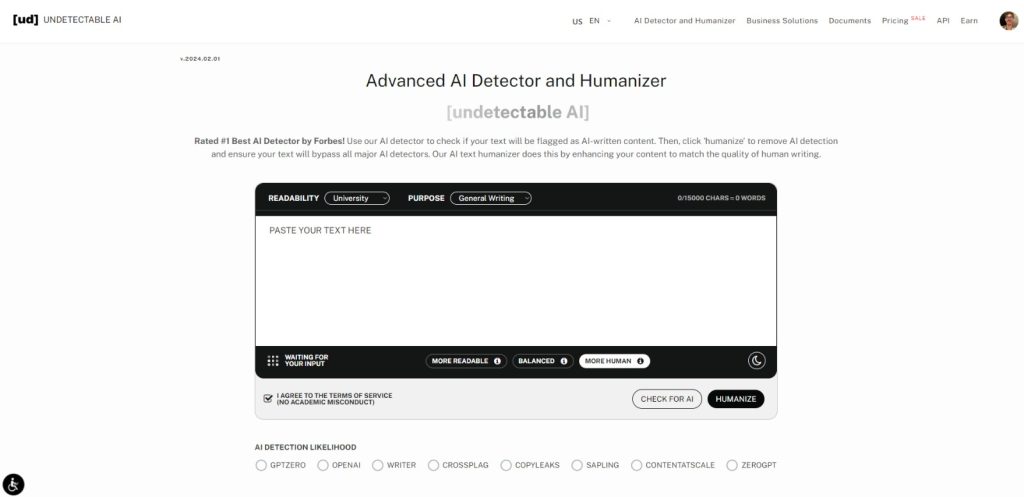
Undetectable analyzes any text you submit to effectively detect AI content. It also includes features like a humanizer that adjusts the writing to match a natural human tone .
We certainly don’t want to stop you from maximizing your potential with the help of AI, so with a useful AI detector and humanizer by your side, you can always get the results you want.
You can try Undetectable AI easily with the widget below (English only). Just input your text and see how it can transform your writing!
Make sure you clearly state your topic, aims, and objectives
This one is essential. Your thesis introduction should be able to clearly define what your research is about (topic), what you plan to accomplish (aims), and the steps you’re taking to get there (objectives).
It’s pretty straightforward and is a no-brainer, but you must do this for several reasons:
- Helps your readers understand the focus of your research right from the get-go.
- Sets clear expectations for your thesis.
- Establishes relevance, making your work highly credible.
- Easier assessment (whether you’ve achieved your goals) by your advisor and evaluators.
Remember, a well-defined introduction is your first step toward a successful thesis. Make it matter.
Explain why your research matters
If your thesis doesn’t make an impact in your field, then it might not be seen as valuable. So, from the start, be sure to explain why your research matters.
This provides a basis for why you’re choosing a specific topic in the first place and explaining why it deserves their attention.
To help, you can also link your research to real-world applications or social issues to enhance its appeal to the research community and beyond.
3 Thesis Introduction Examples to Inspire You

Writing a thesis introduction can be quite a challenge, but looking at examples can help you understand how to start your research on the right foot.
Communications Example
“Is social media ending the age of the newspaper?” This question frequently arises in discussions as the communication landscape continuously evolves.
Platforms like Facebook, X (previously called Twitter), and Instagram continue to grow, and their impact on traditional media – newspapers, television, and radio – becomes more significant and complex.
Social media has drastically changed how people access information. Unlike traditional media, which professional journalists and editors usually produce, social media allows anyone to create and share content.
This shift has huge implications for both media producers and consumers. Understanding these changes is important for professionals in the field and the general population.
This thesis aims to answer several questions: How has social media affected the credibility of traditional news sources?
What strategies are traditional media adopting to compete in a digital world? And how do today’s audiences perceive news found on social media vs traditional platforms?
By addressing these questions, this research seeks to provide a comprehensive understanding of the current media landscape and provide some discourse on the future of communication and modern-day responsible journalism.
Environmental Science Example
Food production is one of the largest contributors to environmental damage.
The methods that we traditionally use to grow and raise our food have serious implications for resource use, greenhouse gas emissions, and land use.
So, we ask the question, “Can our food choices save the planet?”
As global populations rise and climate change accelerates, understanding the environmental impact of different food production systems has never been more important.
Plant-based agriculture and animal-based agriculture differ considerably, so studying these differences can help identify sustainable practices that minimize and ultimately prevent environmental damage.
This thesis aims to address how plant-based and animal-based food production systems compare in terms of resource use and environmental impact and what practices within these systems can reduce their impact on the environment.
Education Example
The global pandemic has made a dent in how we live, and that includes the state of education.
During this difficult time, schools and universities worldwide were essentially forced to shift to online learning almost overnight.
This sudden and widespread adoption of online learning presents a unique opportunity to assess its effectiveness and impact on education – past the pandemic.
If online learning is actually shown to be effective, it could lead to more flexible, accessible, and inclusive educational practices.
Conversely, if notable shortcomings are identified, this can highlight areas that need improvement to support students and educators better.
This thesis aims to identify the effectiveness of online learning in achieving educational outcomes compared to traditional classroom settings, the major challenges faced by students and educators during this transition, and how factors such as socioeconomic status and access to technology influence the effectiveness of online learning.
With this study, we can provide valuable insights into the strengths and weaknesses of online education, contributing to the broader discussion of post-pandemic learning.
How do you start an introduction for a thesis?
To start a thesis introduction, start with a hook that draws the reader in and sets the stage for your research topic. Provide context by discussing the significance of the topic. Then transition into your thesis statement, which outlines the main argument or purpose of your research.
What is an example of a thesis statement in an introduction?
An example of a thesis statement in an introduction could be: “This thesis examines how social media platforms like Facebook, Instagram, and X (formerly Twitter) have reshaped how individuals interact and form relationships in the digital age, with an emphasis on interpersonal communication.” Clearly state the main focus and purpose of your research and provide a roadmap for the reader to understand what will be discussed in your thesis.
What is a good way to start a thesis statement?
You could start a thesis statement by introducing your topic and talking about the specific angle you plan to explore in your research. Grab the reader’s attention and establish why it’s worth investigating further.
How do you start writing a thesis?
Writing a thesis starts with choosing a topic that interests you – and then aligns with your field. Be sure that the main goal of your thesis stays relevant to gain some credibility. With this, you can create a clear thesis statement that outlines the main objective of your study. This is where you can start drafting a compelling thesis introduction and then filling your content with strong arguments that are supported by evidence and analysis. Firmly conclude with a summary of your findings and their implications. Always cite your sources accurately and follow the academic guidelines.
Maximizing the potential of your thesis always starts with an introduction, and with the help of AI tools, you can be confident to write a strong one.
When using these tools, just be sure to have Undetectable AI by your side so that any content you need assistance with stays authentic.
The humanizer feature matches real human writing styles as closely as possible so that your content speaks to your readers.
Remember to tailor your thesis introduction to your specific research topic and audience, and use examples and evidence to back up your claims.
With these strategies in mind, you’ll be well-equipped to write an impactful thesis introduction – paving the way for a great thesis.

Thesis Introduction
Ai generator.
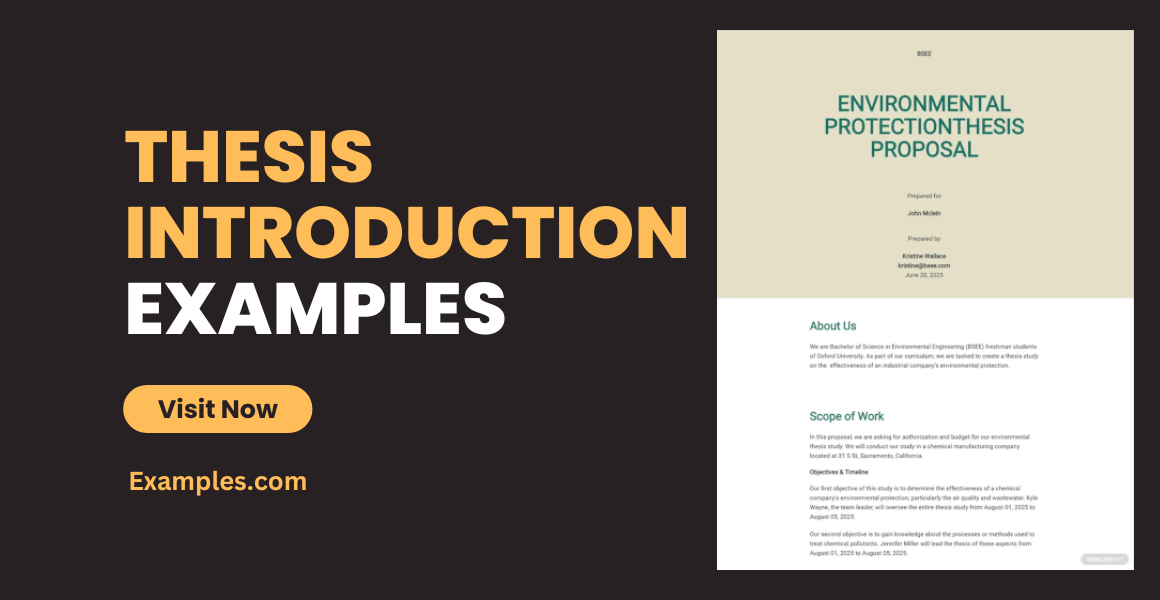
After coming up with your desired topic for your thesis, it is about time that you began preparing that introduction. Just like every good speech or story, you need to have an introduction as to what your thesis outline is all about and what aspects your research will be covering.
In the introduction part of your thesis, you should be trying to focus on three main things, which are called Moves, according to the University of New South Wales database:

Move 1. E stablish your territory
By marking your territory, you begin to elaborate on what your topic is about and its present situation at hand. In doing so, there is also a need for you to point out that your area of research will only be limited to this scope, and for it to go beyond your area of responsibility would be out of the context. You may also see essay examples .
Move 2. E stablish a niche
This section is the heart and soul of your introduction. Without this, why was there even the need to conduct your research in the first place if you do not know what for?
Move 3. Introduce the current research
In conclusion to your introduction, this is where your research steps into the spotlight. In this part, you will be giving the panel a glimpse of the questions the researchers would be tackling during the course of the thesis journey. Aside from stating the hypotheses in this section, it is also important for the researchers to identify early on the end goals the study wants to achieve. You may also see thesis statement .
Each Move has a number of stages. Depending on what you need to say in your introduction, you might use one or more stages. You will also find examples of introductions, divided into stages with sample sentence extracts.
Most thesis introductions include some (but not all) of the stages listed below. There are variations between different schools and between different thesis, depending on the purpose of the thesis. You may also see essay writings .
Stages in a thesis introduction
- State the general topic and give some background.
- Provide a review of the literature related to the topic.
- Define the terms and scope of the topic.
- Outline the current situation.
- Evaluate the current situation (advantages/ disadvantages) and identify the gap.
- Identify the importance of the proposed research.
- State the research problem/questions.
- State the research aims and/or research objectives
- State the hypotheses.
- Outline the order of information in the thesis.
- Outline the methodology.
Listed below is a sample thesis introduction that was made by me and my partner during our college days. You may notice in the introduction, proponents of previous researchers who have conducted a similar study before since the opinion of experts gives the study basis and grounds as to why this topic requires more future studies. You may also see thesis proposal .
Introduction
Even as traditional media continues to be overshadowed by the insurmountable rise of electronic technology such as internet and mobile phones to access online information, daily newspapers have remained to be a key platform in disseminating public information which incites public discourse. A banner story of a newspaper is considered the highlight and most important news story of the day as newspapers follow an order of stories by arranging them of importance from front to inside pages (Tewksbury, 2002). You may also see personal essay .
At present, however, the media is confronted with issues such as making sensationalized, misleading, and satirical news stories not primarily to provide what the readers need to know, but rather to increase the issue’s marketability and compensate for the company’s production cost. Its gigantic headline running from corner to corner accompanied by its banner picture along with the story itself are put in place to draw readers’ attention and set the tone of the issue (Saxena, 2013). These existing practices greatly affect the placement of news stories from the most relevant and significant ones to the least leaving behind many substantial stories given less attention or least, under-reported. Moreover, this dilemma defeats the purpose of the main objectiveof journalism which is to provide the citizenry with information that is vital in shaping their realities and guide them in their decision making which then collates to a more systematic society. You may also see persuasive essay .
For instance, a local English daily placed the slain Bohol town mayor’s story, which reached national coverage, as its banner story of the issue while placing the progress of Cebu City’s Bus Rail Transit (BRT) project, which offers an opportunity for citizens to escape from the almost unmanageable metropolitan traffic jam when pushed through, in the latter pages of the issue. More so, with the long-aged flood problem in the metropolis especially during rainy season, a local English daily published on its second page an article entitled “Garganera: No program to solve flooding” due to the lack of comprehensive programs. You may also see short essay .
However, this did not land in the banner story, despite the relevance and the problem it seeks to raise; instead, a story about a landslide that killed two people was the highlight of the day. Hence, as it can be observed, politics, crime or disaster-based news which would likely create a stir among readers are most often than not picked as the banner story of the day. There are other news stories in other news categories that if written with the right angle and is deemed timely, can have its chance at the banner story. The news is a by-product of a journalist’s job of gathering enough evidence, conducting interviews and constant research in pursuit of the truth. In a newsroom, it is the editorial board that decides what news should be placed as the banner story which they perceive to be the most relevant news for the public to know. You may also see essay examples .
But sometimes, what the newspapers present as their banner story may not really align with the readers’ interests or perhaps may not strike as the most important or critical issue of the day. According to MacGregor (2007), journalists have been known to stray from their audiences in the context of traditional media. Gieber asserts (1960: 2004) that “news selection has no direct relationship to the wants of readers.” Gans (1979) further emphasizes Gieber’s point saying that journalists pay little to no attention to audience feedback, but place certain news together based on what they think would interest their audiences. You may also see reflective essay .
However, most, if not all of the reading public has no clue on how the editorial board decides each story’s position and inclusion. A proof of the abovementioned issues encompassing the news media industry is the presence of internal watchdogs that specialize on in-depth journalism to cover that under-reported news that is often overlooked by the mainstream news media. The Reuters Foundation is among those that provide the public with stories unlikely read or seen in the mainstream news such as humanitarian, women’s rights, human trafficking-based news. You may also see student essay .
One way or another, the media, in whatever form that it takes will never be perfect and will always be accused of bias and sensationalism which leads to public distrust. According to the analysis of some scholars, (Blumler and Gurevitch, 1995; McManus, 1994; Grabe et al., 2001) they have observed that the news is becoming more sensational or ‘tabloid-like’ over time. These kinds of stories may render the news more ‘colorful’ but are not exactly more informative (Blumler and Gurevitch, 1995; Franklin, 2005). You may also see analytical essay
Which is why one other end goal that the study wants to achieve is for each newspaper editorial board to be transparent on how the body decides each story should be written as well as the selection process of the news stories that determine which page each story belongs to. At the same time, it is also crucial that the public themselves understand how the editorial process is being done to grasp the concept behind story selection and editorial judgment in hopes that the strong trust between the public and the media will be restored once more as the media continues to deliver the news to the reading public with the challenge that they remain loyal and trustworthy by them.You may also see concept essay .
Only front-page studies are available for the researchers’ basis for their research as there were very minimal studies on banner stories. This study will be conducted for the purpose of understanding the present landscape of Cebu’s three local English newspapers. As compared to other media researchers, this will focus on identifying the most frequent news category published in the banner story of Cebu’s three local English newspapers: Cebu Daily News, SunStar Cebu, and The Freeman. Additionally, the researchers would also analyze the rhetoric of the dailies based on 1) the news values assigned by the journalists in every news story, and 2) the standard basis utilized by each newspaper’s editorial board in the selection process of news stories.You may also see comparative essay .
If you think the Introduction part of the thesis is exhausting, just wait until you get to the theoretical background and the review of related literature. They say those parts just crushes the soul out of you during the first half of your thesis writing. But do not fret. Because even though writing a thesis is like taking a walk in the park (Jurassic Park), all that hassle is really worth the tassel. Good luck!
Thesis Table Of Contents Template
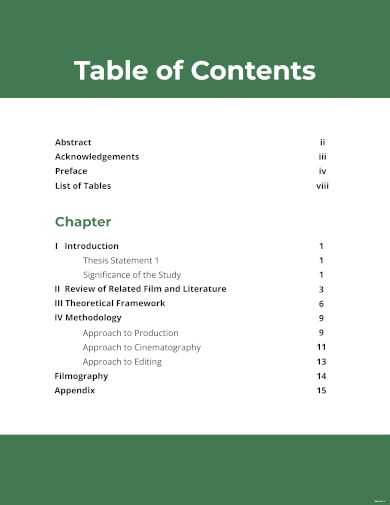
- Google Docs
- Apple Pages
- MS Publisher
Size: 36 KB
Thesis Proposal Template
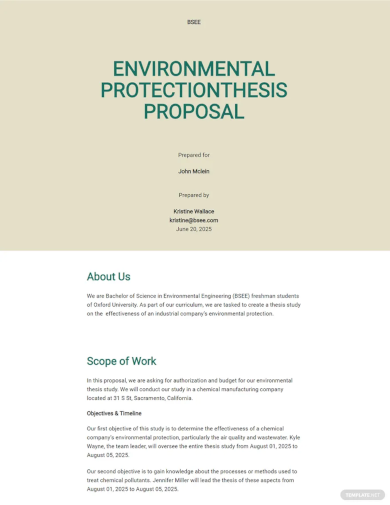
Size: 80 KB
Thesis Proposal Gantt Chart Template
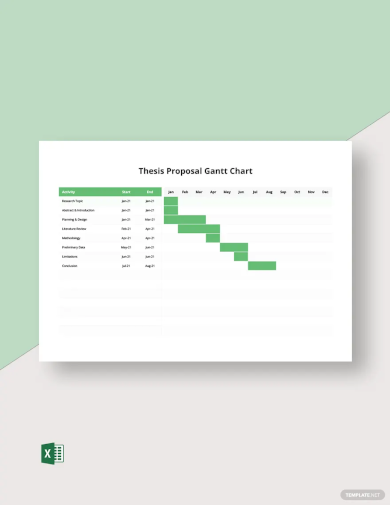
Size: 30 KB
Text prompt
- Instructive
- Professional
10 Examples of Public speaking
20 Examples of Gas lighting
- How it works
"Christmas Offer"
Terms & conditions.
As the Christmas season is upon us, we find ourselves reflecting on the past year and those who we have helped to shape their future. It’s been quite a year for us all! The end of the year brings no greater joy than the opportunity to express to you Christmas greetings and good wishes.
At this special time of year, Research Prospect brings joyful discount of 10% on all its services. May your Christmas and New Year be filled with joy.
We are looking back with appreciation for your loyalty and looking forward to moving into the New Year together.
"Claim this offer"
In unfamiliar and hard times, we have stuck by you. This Christmas, Research Prospect brings you all the joy with exciting discount of 10% on all its services.
Offer valid till 5-1-2024
We love being your partner in success. We know you have been working hard lately, take a break this holiday season to spend time with your loved ones while we make sure you succeed in your academics
Discount code: RP0996Y

How to Write the Thesis Or Dissertation Introduction – Guide
Published by Carmen Troy at August 31st, 2021 , Revised On June 7, 2024
What would you tell someone if they asked you to introduce yourself? You’d probably start with your name, what you do for a living…etc., etc., etc. Think of your dissertation as the same. How would you go about it if you had to introduce it to the world for the first time?
Keep this forefront in your mind for the remainder of this guide: you are introducing your research to the world that doesn’t even know it exists. Every word, phrase and line you write in your introduction will stand for the strength of your dissertation’s character.
This is not very different from how, in real life, if someone fails to introduce themselves properly (such as leaving out what they do for a living, where they live, etc.) to a stranger, it leaves a lasting impression on the stranger.
Don’t leave your dissertation a stranger among other strangers. Let’s review the little, basic concepts we already have at the back of our minds, perhaps, to piece them together in one body: an introduction.
What Goes Inside an Introduction
The exact ingredients of a dissertation or thesis introduction chapter vary depending on your chosen research topic, your university’s guidelines, and your academic subject – but they are generally mixed in one sequence or another to introduce an academic argument.
The critical elements of an excellent dissertation introduction include a definition of the selected research topic , a reference to previous studies on the subject, a statement of the value of the subject for academic and scientific communities, a clear aim/purpose of the study, a list of your objectives, a reference to viewpoints of other researchers and a justification for the research.
Steps of Writing a Dissertation Introduction
- Research background
- Significance of the research
- Research problem
- Research questions
- The research aims and objectives
- Limitations of the research
- Outline of dissertation
1. Research Background – Writing a Dissertation Introduction
This is the very first section of your introduction. Building a background of your chosen topic will help you understand more about the topic and help readers know why the general research area is problematic, interesting, central, important, etc.
Your research background should include significant concepts related to your dissertation topic. This will give your supervisor and markers an idea that you’ve investigated the research problem thoroughly and know the various aspects of your topic.
The introduction to a dissertation shouldn’t talk only about other research work in the same area, as this will be discussed in the literature review section. Moreover, this section should not include the research design and data collection method(s) .
All about research strategy should be covered in the methodology chapter . Research background only helps to build up your research in general.
For instance, if your research is based on job satisfaction measures of a specific country, the content of the introduction chapter will generally be about job satisfaction and its impact.
Hire an Expert Writer
Orders completed by our expert writers are
- Formally drafted in academic style
- Plagiarism free
- Never resold
- Include unlimited free revisions
- Completed to match exact client requirements

2. Significance of the Research
As a researcher, you must demonstrate how your research will provide value to the scientific and academic communities. If your dissertation is based on a specific company or industry, you need to explain why that industry and company were chosen.
If you’re comparing, explain why you’re doing so and what this research will yield. Regardless of your chosen research topic, explain thoroughly in this section why this research is being conducted and what benefits it will serve.
The idea here is to convince your supervisor and readers that the concept should be researched to find a solution to a problem.
3. Research Problem
Once you’ve described the main research problem and the importance of your research, the next step would be to present your problem statement , i.e., why this research is being conducted and its purpose.
This is one of the essential aspects of writing a dissertation’s introduction. Doing so will help your readers understand what you intend to do in this research and what they should expect from this study.
Presenting the research problem competently is crucial in persuading your readers to read other parts of the dissertation paper . This research problem is the crux of your dissertation, i.e., it gives a direction as to why this research is being carried out, and what issues the study will consider. The research problem should be a clear and concise statement that identifies the gap in the existing knowledge that your research aims to fill. It should be specific enough to guide your research, but broad enough to allow for a comprehensive investigation.
For example, if your dissertation is based on measuring the job satisfaction of a specific organisation, your research problem should talk about the problem the company is facing and how your research will help the company to solve that.
If your dissertation is not based on any specific organisation, you can explain the common issues that companies face when they do not consider job satisfaction as a pillar of business growth and elaborate on how your research will help them realise its importance.
Citing too many references in the introduction chapter isn’t recommended because here, you must explain why you chose to study a specific area and what your research will accomplish. Any citations only set the context, and you should leave the bulk of the literature for a later section.
4. Research Question(s)
The central part of your introduction is the research question , which should be based on your research problem and the dissertation title. Combining these two aspects will help you formulate an exciting yet manageable research question. Your research question is what your research aims to answer and around which your dissertation will revolve. The research question should be specific and concise.
Your research question is what your research aims to answer and around which your dissertation will revolve. The research question should be specific and concise.
It should be a one- or two-line question you’ve set out to answer through your dissertation. For the job satisfaction example, a sample research question could be, how does job satisfaction positively impact employee performance?
Look up dissertation introduction examples online or ask your friends to get an idea of how an ideal research question is formed. Or you can review our dissertation introduction example here and research question examples here .
Once you’ve formed your research question, pick out vital elements from it, based on which you will then prepare your theoretical framework and literature review. You will come back to your research question again when concluding your dissertation .
Sometimes, you might have to formulate a hypothesis in place of a research question. The hypothesis is a simple statement you prove with your results , discussion and analysis .
A sample hypothesis could be job satisfaction is positively linked to employee job performance . The results of your dissertation could be in favour of this dissertation or against it.
Tip: Read up about what alternative, null, one-tailed and two-tailed hypotheses are so you can better formulate the hypothesis for your dissertation. Following are the definitions for each term, as retrieved from Trochim et al.’s Research Methods: The Essential Knowledge Base (2016):
- Alternative hypothesis (H 1 ): “A specific statement of prediction that usually states what you expect will happen in your study.”
- Null hypothesis (H 0 ): “The hypothesis that describes the possible outcomes other than the alternative hypothesis. Usually, the null hypothesis predicts there will be no effect of a program or treatment you are studying.”
- One-tailed hypothesis: “A hypothesis that specifies a direction; for example, when your hypothesis predicts that your program will increase the outcome.”
- Two-tailed hypothesis: “A hypothesis that does not specify a direction. For example, if you hypothesise that your program or intervention will affect an outcome, but you are unwilling to specify whether that effect will be positive or negative, you are using a two-tailed hypothesis.”
Get Help with Any Part of Your Dissertation!
UK’s best academic support services. How would you know until you try?
Interesting read: 10 ways to write a practical introduction fast .
Get Help With Any Part of Your Dissertation!
Uk’s best academic support services. how would you know until you try, 5. research aims and objectives.
Next, the research aims and objectives. Aims and objectives are broad statements of desired results of your dissertation . They reflect the expectations of the topic and research and address the long-term project outcomes.
These statements should use the concepts accurately, must be focused, should be able to convey your research intentions and serve as steps that communicate how your research question will be answered.
You should formulate your aims and objectives based on your topic, research question, or hypothesis. These are simple statements and are an extension of your research question.
Through the aims and objectives, you communicate to your readers what aspects of research you’ve considered and how you intend to answer your research question.
Usually, these statements initiate with words like ‘to explore’, ‘to study’, ‘to assess’, ‘to critically assess’, ‘to understand’, ‘to evaluate’ etc.
You could ask your supervisor to provide some thesis introduction examples to help you understand better how aims and objectives are formulated. More examples are here .
Your aims and objectives should be interrelated and connect to your research question and problem. If they do not, they’ll be considered vague and too broad in scope.
Always ensure your research aims and objectives are concise, brief, and relevant.
Once you conclude your dissertation , you will have to revert back to address whether your research aims and objectives have been met.
You will have to reflect on how your dissertation’s findings , analysis, and discussion related to your aims and objectives and how your research has helped in achieving them.

6. Research Limitations
This section is sometimes a part of the dissertation methodology section ; however, it is usually included in the introduction of a dissertation.
Every research has some limitations. Thus, it is normal for you to experience certain limitations when conducting your study.
You could experience research design limitations, data limitations or even financial limitations. Regardless of which type of limitation you may experience, your dissertation would be impacted. Thus, it would be best if you mentioned them without any hesitation.
When including this section in the introduction, make sure that you clearly state the type of constraint you experienced. This will help your supervisor understand what problems you went through while working on your dissertation.
However, one aspect that you should take care of is that your results, in no way, should be influenced by these restrictions. The results should not be compromised, or your dissertation will not be deemed authentic and reliable.
After you’ve mentioned your research limitations, discuss how you overcame them to produce a perfect dissertation .
Also, mention that your limitations do not adversely impact your results and that you’ve produced research with accurate results the academic community can rely on.
Also read: How to Write Dissertation Methodology .
7. Outline of the Dissertation
Even though this isn’t a mandatory sub-section of the introduction chapter, good introductory chapters in dissertations outline what’s to follow in the preceding chapters.
It is also usual to set out an outline of the rest of the dissertation . Depending on your university and academic subject, you might also be asked to include it in your research proposal .
Because your tutor might want to glance over it to see how you plan your dissertation and what sections you’d include; based on what sections you include and how you intend to research and cover them, they’d provide feedback for you to improve.
Usually, this section discusses what sections you plan to include and what concepts and aspects each section entails. A standard dissertation consists of five sections : chapters, introduction, literature review , methodology , results and discussion , and conclusion .
Some dissertation assignments do not use the same chapter for results and discussion. Instead, they split it into two different chapters, making six chapters. Check with your supervisor regarding which format you should follow.
When discussing the outline of your dissertation , remember that you’d have to mention what each section involves. Discuss all the significant aspects of each section to give a brief overview of what your dissertation contains. This is precisely what our dissertation outline service provides.
Writing a dissertation introduction might seem complicated, but it is not if you understand what is expected of you. To understand the required elements and make sure that you focus on all of them.
Include all the aspects to ensure your supervisor and other readers can easily understand how you intend to undertake your research.
“If you find yourself stuck at any stage of your dissertation introduction, get introduction writing help from our writers! At ResearchProspect, we offer a dissertation writing service , and our qualified team of writers will also assist you in conducting in-depth research for your dissertation.
Topic Discussion versus Topic Introduction
Discussing and introducing a topic are two highly different aspects of dissertation introduction writing. You might find it easy to discuss a topic, but introducing it is much trickier.
The introduction is the first thing a reader reads; thus, it must be to the point, informative, engaging, and enjoyable. Even if one of these elements is missing, the reader will not be motivated to continue reading the paper and will move on to something different.
So, it’s critical to fully understand how to write the introduction of a dissertation before starting the actual write-up.
When writing a dissertation introduction, one has to explain the title, discuss the topic and present a background so that readers understand what your research is about and what results you expect to achieve at the end of the research work.
As a standard practice, you might work on your dissertation introduction chapter several times. Once when you’re working on your proposal and the second time when writing your actual dissertation.
“Want to keep up with the progress of the work done by your writer? ResearchProspect can deliver your dissertation order in three parts; outline, first half, and final dissertation delivery. Here is the link to our online order form .
Many academics argue that the Introduction chapter should be the last section of the dissertation paper you should complete, but by no means is it the last part you would think of because this is where your research starts from.
Write the draft introduction as early as possible. You should write it at the same time as the proposal submission, although you must revise and edit it many times before it takes the final shape.
Considering its importance, many students remain unsure of how to write the introduction of a dissertation. Here are some of the essential elements of how to write the introduction of a dissertation that’ll provide much-needed dissertation introduction writing help.
Here are some guidelines for you to learn to write a flawless first-class dissertation paper.
Dissertation Introduction Samples & Examples
Check out some basic samples of dissertation introduction chapters to get started.
FAQs about Dissertation Introduction
How to write a dissertation introduction.
- Capture the attention of your reader
- Add the following sections:
- Learn from others
What is the purpose of an introduction chapter?
It’s used to introduce key constructs, ideas, models and/or theories etc. relating to the topic; things that you will be basing the remainder of your dissertation on.
How do you start an introduction in a dissertation?
There is more than one way of starting a dissertation’s introductory chapter. You can begin by stating a problem in your area of interest, review relevant literature, identify the gap, and introduce your topic. Or, you can go the opposite way, too. It’s all entirely up to your discretion. However, be consistent in the format you choose to write in.
How long should a dissertation introduction be?
It can range from 1000 to 2000 words for a master’s dissertation , but for a higher-level dissertation, it mostly ranges from 8,000 to 10,000 words ’ introduction chapter. In the end, though, it depends on the guidelines provided to you by your department.
Dissertation Introduction Checklist
You may also like.
Make sure to develop a conceptual framework before conducting research. Here is all you need to know about what is a conceptual framework is in a dissertation?
The list of figures and tables in dissertation help the readers find tables and figures of their interest without looking through the whole dissertation.
This brief introductory section aims to deal with the definitions of two paradigms, positivism and post-positivism, as well as their importance in research.
As Featured On

USEFUL LINKS
LEARNING RESOURCES

COMPANY DETAILS

Splash Sol LLC
- How It Works
Thesis Introduction: Definition, Length, Examples & How-to Guide
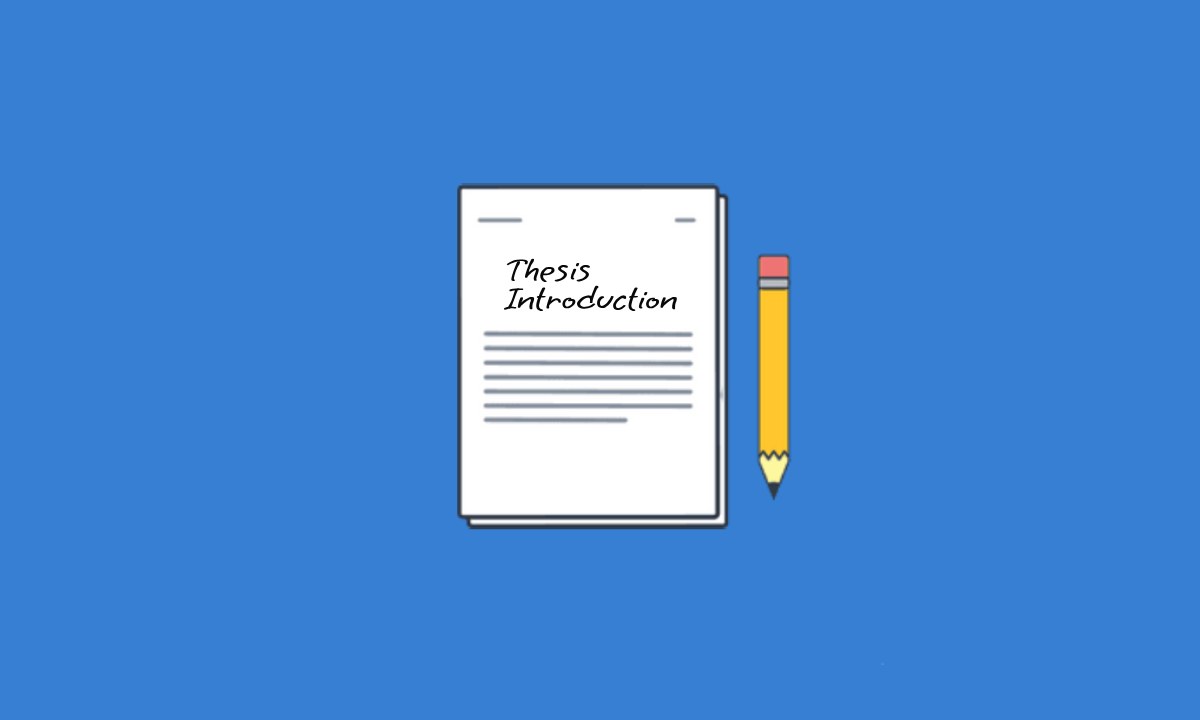
What is Thesis Introduction?
The thesis introduction is the opening section of a thesis or dissertation that introduces the research topic, explains its significance, outlines the purpose and objectives of the research, provides a roadmap for the document’s structure, and engages the reader’s interest with a compelling opening statement. It culminates in a concise thesis statement that summarizes the main argument or focus of the entire thesis. The introduction serves as the entry point to the research work, guiding the reader and setting the tone for the rest of the document.
Table of Contents
What Should be in the Introduction of a Thesis?
Background and Context: Start by providing background information on the topic of your thesis. This can include the historical context, relevant theories, previous research, or any significant events or developments that led to your research question. Essentially, you’re outlining what is already known about the subject.
Research Problem or Question: Clearly state the research problem or question that your thesis aims to address. This is the central focus of your work and should be articulated in a way that highlights its importance and relevance to the field.
Objectives or Purpose: Outline the specific objectives or purpose of your research. What do you hope to achieve by conducting this study? These objectives should align with addressing the research problem or question you’ve identified.
Scope and Limitations: Define the scope of your study, including what aspects of the topic you will be focusing on and what will be excluded. Additionally, acknowledge any limitations that may impact the validity or generalizability of your findings.
Significance of the Study: Discuss why your research is important and how it contributes to the existing body of knowledge in your field. Highlight any potential practical implications or theoretical advancements that may result from your work.
Overview of the Thesis Structure: Provide a brief overview of how the thesis is organized. Outline the main sections or chapters and briefly describe what each will cover.
Theoretical Framework (if applicable): If your research is grounded in a specific theoretical framework or conceptual model, briefly introduce it in the introduction. Explain why you’ve chosen this framework and how it informs your study.
Methodological Approach: Depending on your field and research design, you may also want to include a brief overview of your methodological approach. This could include the research design, data collection methods, and data analysis techniques you’ll be using.
How Long Should a Thesis Introduction Be?
The length of a thesis introduction can vary depending on several factors, including the specific requirements of your academic institution, the complexity of your research topic, and the overall length of your thesis. However, as a general guideline, the introduction typically ranges from 5% to 10% of the total word count of the thesis.
For example, if your thesis is 10,000 words long, the introduction would typically be around 500 to 1,000 words. Similarly, if your thesis is 20,000 words, the introduction would range from approximately 1,000 to 2,000 words.
How To Write Thesis Introduction?
Writing a good thesis introduction is crucial because it sets the stage for your entire research work. It should provide a clear overview of your research topic, its significance, and the structure of your thesis. Here’s a step-by-step guide to help you write an effective thesis introduction:
Understand the Purpose:
Before you start writing, make sure you have a clear understanding of the purpose of your thesis introduction. It should introduce the reader to your research topic, establish its importance, and provide an overview of your thesis structure.
Begin with a Hook:
Start your introduction with a compelling hook or opening statement that grabs the reader’s attention. It could be a surprising fact, a thought-provoking question, a relevant quote, or a brief anecdote related to your research topic.
Provide Background Information:
After the hook, provide some background information about your research topic. Explain why it is important and relevant to your field of study. This helps the reader understand the context of your research.
State the Research Problem or Question:
Clearly state the research problem or question that your thesis aims to address. This should be concise and specific. It should also convey the significance of your research by highlighting the gap or problem in the existing literature.
Justify the Research:
Explain why your research is necessary. Discuss the potential benefits or contributions it can make to your field of study or society in general. Highlight any practical or theoretical implications of your research.
Outline the Objectives or Hypotheses:
Present the objectives of your research or the hypotheses you intend to test. These should be aligned with your research problem and provide a clear direction for your study.
Discuss the Scope and Limitations:
Define the scope of your thesis by specifying the boundaries of your research. Mention any limitations or constraints that may affect the generalizability of your findings. Being transparent about these aspects demonstrates your awareness of potential limitations.
Provide an Overview of the Structure:
Briefly outline the structure of your thesis. Mention the main chapters or sections and their order. This gives the reader a roadmap of what to expect in the rest of the document.
Write a Thesis Statement:
Conclude your introduction with a clear and concise thesis statement. This statement should encapsulate the main argument or purpose of your thesis. It should be specific and debatable.
Revise and Refine:
After writing the initial draft, revise and refine your introduction. Ensure that it flows logically, is free from jargon, and is easy for a general audience to understand. Pay attention to grammar, punctuation, and clarity.
Seek Feedback:
Share your introduction with peers, advisors, or mentors to get feedback. They can provide valuable insights and suggestions for improvement.
Before submitting your thesis, carefully proofread your introduction to eliminate any errors in grammar, spelling, or formatting.
Below are some examples of thesis introductions that will help you write good introductions.
Thesis Introduction Examples
Environmental science thesis introduction.
In recent decades, the alarming rate of deforestation in the Amazon rainforest has raised significant concerns worldwide. This tropical ecosystem is not only a biodiversity hotspot but also plays a crucial role in regulating global climate patterns. Despite international efforts to curb deforestation, the problem persists. This thesis seeks to understand the underlying drivers of deforestation in the Amazon and propose policy recommendations for more effective conservation strategies.
Psychology Thesis Introduction
Anxiety disorders affect millions of individuals, leading to decreased quality of life and impaired functioning. Cognitive-behavioral therapy (CBT) has been a widely accepted treatment for various anxiety disorders, but its efficacy varies among individuals. This thesis explores the factors that influence the effectiveness of CBT in the treatment of anxiety disorders and aims to identify personalized treatment approaches based on patient characteristics.
History Thesis Introduction
The Industrial Revolution of the 18th and 19th centuries marked a profound shift in human history. This period of rapid industrialization and urbanization brought about significant societal changes. However, the impact of the Industrial Revolution on the lives of women in England remains an understudied aspect of this era. This thesis delves into the experiences of working-class women during the Industrial Revolution and their contributions to the labor force and social reform movements.
Computer Science Thesis Introduction
The exponential growth of data in the digital age has given rise to numerous challenges in data management and analysis. Traditional relational databases struggle to handle the volume and variety of data generated today. This thesis explores the potential of NoSQL databases as a solution for managing and processing big data and evaluates their performance in comparison to traditional relational databases.
Sociology Thesis Introduction
Social media platforms have become an integral part of modern society, shaping how individuals communicate and interact. This thesis investigates the impact of social media on interpersonal relationships and explores whether online interactions are replacing or enhancing face-to-face communication. Understanding these dynamics is essential in the context of an increasingly digitalized world.
Economics Thesis Introduction
Income inequality has been a persistent issue in many countries, with wide-ranging economic and social implications. This thesis examines the relationship between fiscal policies and income inequality, with a focus on how progressive taxation and social welfare programs influence wealth distribution. The findings aim to inform policymakers on strategies to address income inequality effectively.
Each introduction provides a clear overview of the research problem, its significance, and the research objectives, setting the stage for the rest of the thesis.
In conclusion, the thesis introduction is your chance to make a strong first impression on your readers. It sets the stage for your research, highlighting its significance and providing a clear roadmap. By following the step-by-step guide we’ve outlined and studying the examples provided, you can hone your skills in crafting compelling and effective thesis introductions
Related Posts
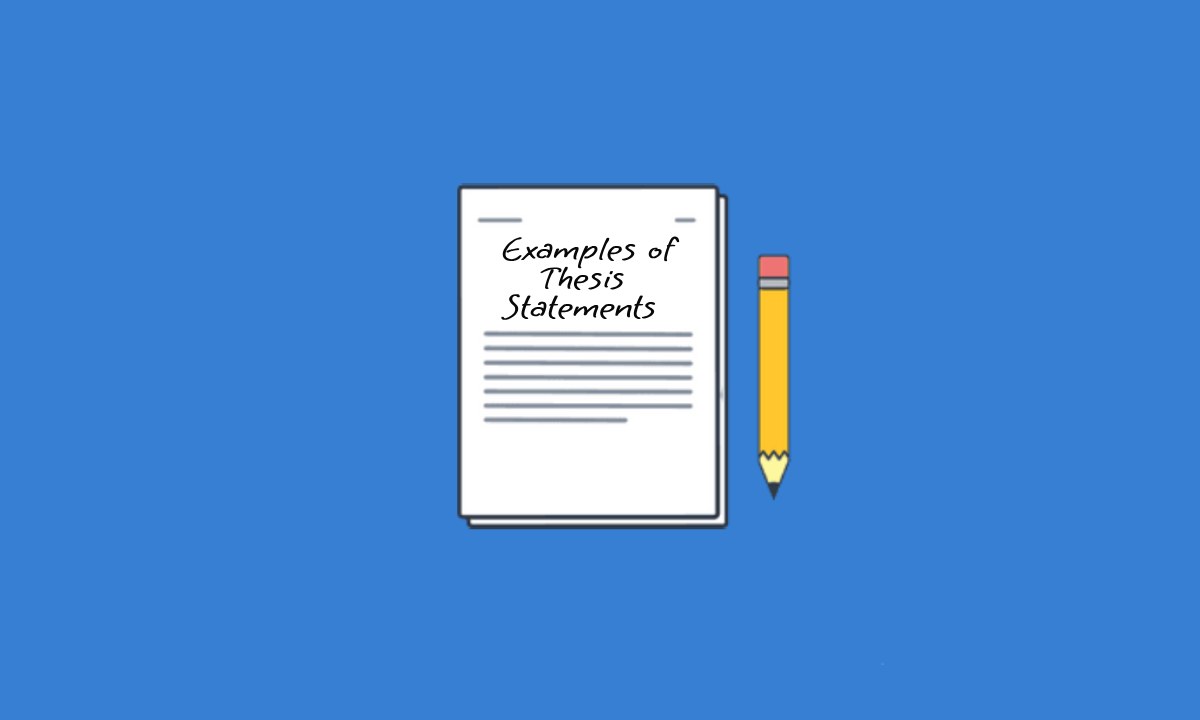
20+ Examples of Thesis Statements
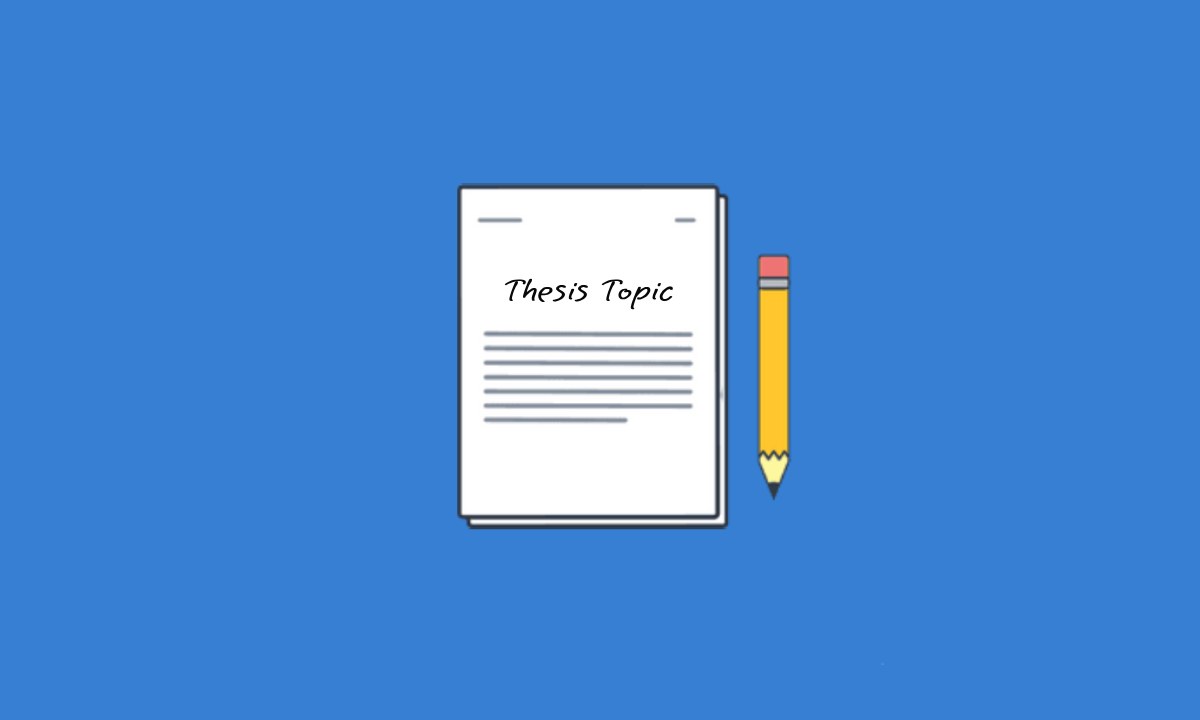
Thesis Topic: Definition, Factors, How-to & Examples
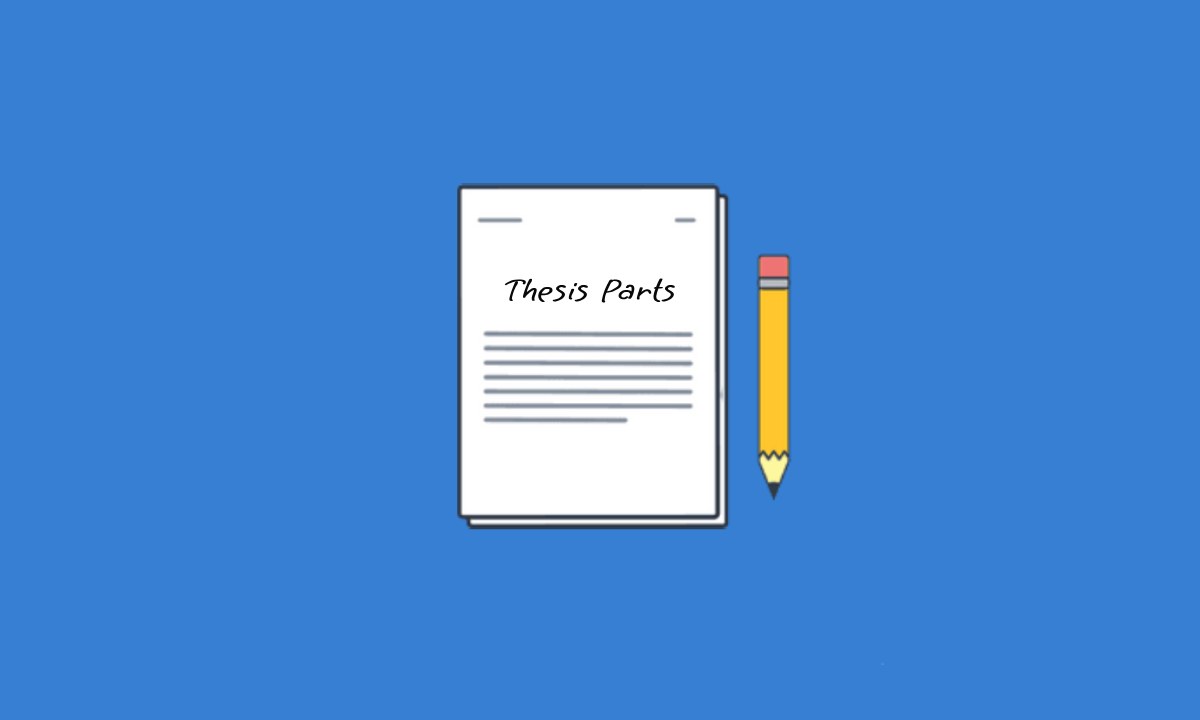
5 Major Parts That a Thesis Must Include
Have a language expert improve your writing
Run a free plagiarism check in 10 minutes, automatically generate references for free.
- Knowledge Base
- Dissertation
How to Write a Thesis or Dissertation Introduction
Published on 9 September 2022 by Tegan George and Shona McCombes. Revised on 10 September 2024.
The introduction is the first section of your thesis or dissertation , appearing right after the table of contents . Your introduction draws your reader in, setting the stage for your research with a clear focus, purpose, and direction.
Your introduction should include:
- Your topic, in context: what does your reader need to know to understand your thesis dissertation?
- Your focus and scope: what specific aspect of the topic will you address?
- The relevance of your research: how does your work fit into existing studies on your topic?
- Your questions and objectives: what does your research aim to find out, and how?
- An overview of your structure: what does each section contribute to the overall aim?
Make your writing flawless in 1 upload
Be assured that you'll submit flawless writing. Upload your document to correct all your mistakes.

Table of contents
How to start your introduction, topic and context, focus and scope, relevance and importance, questions and objectives, overview of the structure, thesis introduction example, introduction checklist, frequently asked questions about introductions.
Although your introduction kicks off your dissertation, it doesn’t have to be the first thing you write – in fact, it’s often one of the very last parts to be completed (just before your abstract ).
It’s a good idea to write a rough draft of your introduction as you begin your research, to help guide you. If you wrote a research proposal , consider using this as a template, as it contains many of the same elements. However, be sure to revise your introduction throughout the writing process, making sure it matches the content of your ensuing sections.
The only proofreading tool specialized in correcting academic writing
The academic proofreading tool has been trained on 1000s of academic texts and by native English editors. Making it the most accurate and reliable proofreading tool for students.

Upload my document
Begin by introducing your research topic and giving any necessary background information. It’s important to contextualise your research and generate interest. Aim to show why your topic is timely or important. You may want to mention a relevant news item, academic debate, or practical problem.
After a brief introduction to your general area of interest, narrow your focus and define the scope of your research.
You can narrow this down in many ways, such as by:
- Geographical area
- Time period
- Demographics or communities
- Themes or aspects of the topic
It’s essential to share your motivation for doing this research, as well as how it relates to existing work on your topic. Further, you should also mention what new insights you expect it will contribute.
Start by giving a brief overview of the current state of research. You should definitely cite the most relevant literature, but remember that you will conduct a more in-depth survey of relevant sources in the literature review section, so there’s no need to go too in-depth in the introduction.
Depending on your field, the importance of your research might focus on its practical application (e.g., in policy or management) or on advancing scholarly understanding of the topic (e.g., by developing theories or adding new empirical data). In many cases, it will do both.
Ultimately, your introduction should explain how your thesis or dissertation:
- Helps solve a practical or theoretical problem
- Addresses a gap in the literature
- Builds on existing research
- Proposes a new understanding of your topic
Perhaps the most important part of your introduction is your questions and objectives, as it sets up the expectations for the rest of your thesis or dissertation. How you formulate your research questions and research objectives will depend on your discipline, topic, and focus, but you should always clearly state the central aim of your research.
If your research aims to test hypotheses , you can formulate them here. Your introduction is also a good place for a conceptual framework that suggests relationships between variables .
- Conduct surveys to collect data on students’ levels of knowledge, understanding, and positive/negative perceptions of government policy.
- Determine whether attitudes to climate policy are associated with variables such as age, gender, region, and social class.
- Conduct interviews to gain qualitative insights into students’ perspectives and actions in relation to climate policy.
To help guide your reader, end your introduction with an outline of the structure of the thesis or dissertation to follow. Share a brief summary of each chapter, clearly showing how each contributes to your central aims. However, be careful to keep this overview concise: 1-2 sentences should be enough.
I. Introduction
Human language consists of a set of vowels and consonants which are combined to form words. During the speech production process, thoughts are converted into spoken utterances to convey a message. The appropriate words and their meanings are selected in the mental lexicon (Dell & Burger, 1997). This pre-verbal message is then grammatically coded, during which a syntactic representation of the utterance is built.
Speech, language, and voice disorders affect the vocal cords, nerves, muscles, and brain structures, which result in a distorted language reception or speech production (Sataloff & Hawkshaw, 2014). The symptoms vary from adding superfluous words and taking pauses to hoarseness of the voice, depending on the type of disorder (Dodd, 2005). However, distortions of the speech may also occur as a result of a disease that seems unrelated to speech, such as multiple sclerosis or chronic obstructive pulmonary disease.
This study aims to determine which acoustic parameters are suitable for the automatic detection of exacerbations in patients suffering from chronic obstructive pulmonary disease (COPD) by investigating which aspects of speech differ between COPD patients and healthy speakers and which aspects differ between COPD patients in exacerbation and stable COPD patients.
Checklist: Introduction
I have introduced my research topic in an engaging way.
I have provided necessary context to help the reader understand my topic.
I have clearly specified the focus of my research.
I have shown the relevance and importance of the dissertation topic .
I have clearly stated the problem or question that my research addresses.
I have outlined the specific objectives of the research .
I have provided an overview of the dissertation’s structure .
You've written a strong introduction for your thesis or dissertation. Use the other checklists to continue improving your dissertation.
The introduction of a research paper includes several key elements:
- A hook to catch the reader’s interest
- Relevant background on the topic
- Details of your research problem
- A thesis statement or research question
- Sometimes an outline of the paper
Don’t feel that you have to write the introduction first. The introduction is often one of the last parts of the research paper you’ll write, along with the conclusion.
This is because it can be easier to introduce your paper once you’ve already written the body ; you may not have the clearest idea of your arguments until you’ve written them, and things can change during the writing process .
Research objectives describe what you intend your research project to accomplish.
They summarise the approach and purpose of the project and help to focus your research.
Your objectives should appear in the introduction of your research paper , at the end of your problem statement .
Cite this Scribbr article
If you want to cite this source, you can copy and paste the citation or click the ‘Cite this Scribbr article’ button to automatically add the citation to our free Reference Generator.
George, T. & McCombes, S. (2024, September 10). How to Write a Thesis or Dissertation Introduction. Scribbr. Retrieved 16 December 2024, from https://www.scribbr.co.uk/thesis-dissertation/introduction/
Is this article helpful?
Tegan George
Other students also liked, what is a dissertation | 5 essential questions to get started, how to write an abstract | steps & examples, how to write a thesis or dissertation conclusion.

How to Write a Compelling Thesis Introduction

The introduction to your thesis is like a first impression: you want it to be great. It is the first chapter and appears before the literature review and after the table of contents. You want the introduction to set the stage for your reader: tell them what you’re writing about, why, and what comes next. So how can you write a compelling thesis introduction?
Structure and elements of a thesis introduction
Before you write a compelling thesis introduction, you need to know what elements belong in this section and how it should be structured. A typical thesis introduction includes:
- A clear thesis statement
- An explanation of the context (brief background) for the study
- The focus and scope of the paper
- An explanation of the relevance and importance of your research
- A description of the objectives of your research and how your methodology achieves them
- A guide to the structure of the rest of the thesis (roadmap)
A thesis introduction is typically about 10% of the total length of your paper. If your introduction includes diagrams or figures, the length may be longer. It is critical to include all of the points above when writing a clear and compelling introduction. You may include additional elements if you feel they are essential in introducing your topic to the audience.
Thesis introduction: Getting started
If you do decide to write your introduction first, you can draw on the information in your thesis/dissertation proposal to help construct your draft.
How should you draft your thesis introduction, and when should you do it?
Despite the fact that your introduction comes first in the structure of your thesis, there is absolutely no need to write it first. Starting your thesis is often difficult and overwhelming, and many writers suffer from blank page syndrome —the paralysis of not knowing where to start. For this reason, some people advocate writing a kind of placeholder introduction when you begin, just to get something written down. You are free to write the introduction section at the beginning, middle, or end of the thesis drafting process . I personally find it preferable to write the introduction to a paper after I have already drafted a significant portion of the remainder of the paper. This is because I can draw on what I have written already to make sure that I cover all of the important points above.
However, if you do decide to write your introduction first, you can draw on the information in your thesis/dissertation proposal to help construct your draft. Just keep in mind that you will need to revisit your introduction after you have written the rest of your thesis to make sure it still provides an accurate roadmap and summary of the paper for your readers.
Topic and background information
When you introduce your topic, you want to draw your reader in.
Your thesis introduction should begin by informing the reader what your topic is and providing them with some relevant background information. The amount of background information you provide in this step will actually depend on what type of thesis/dissertation you are writing.
If you are writing a paper in the natural sciences or some social sciences, then it will have a separate background section after the introduction. Not a lot of background information is needed here. You can just state the larger context of the research. However, if your paper is structured such that there is no separate background chapter, then this portion of your thesis will be a bit longer and that is okay.
When you introduce your topic, you want to draw your reader in. Provide them with the reasons your research is interesting and important so that they will want to keep reading. Don’t be afraid to offer up some surprising facts or an interesting anecdote. You don’t need to be sensationalist, but your writing does not have to be dry and boring also! It is encouraged that you try to connect to your reader by offering them a relevant fact or story about your topic.
Example (topic) Weaknesses in financial regulatory systems in the United States
Example (context): Highlight some news stories about banks allowing money laundering on a massive scale, which financed gangs and led to more street drugs in major American cities. You could include a story about someone personally impacted by drugs in their neighborhood and then connect the presence of drugs to the gangs who were allowed to launder their money through big banks.
Focus and scope of your thesis
Once you have introduced your reader to the broader topic and provided some background information, you might want to explain the specific focus and scope of your thesis.
Once you have introduced your reader to the broader topic and provided some background information, you might want to explain the specific focus and scope of your thesis. What aspect of your topic will you research in particular? Why? What will your research not cover, and why? While this second part is optional, it is often helpful to be very specific about the aims of your research.
Example : Regulatory capture in the Federal Reserve and how it contributes to lax enforcement of anti-money laundering regulations.
You might write about this by explaining that your study focuses on regulatory capture in the Federal Reserve because they are one of the primary regulatory bodies monitoring the financial institutions, which were caught allowing money laundering. You could further specify that you will be focusing specifically on the role the Federal Reserve plays in monitoring banks for compliance with anti-money laundering laws; however, you will not be talking about the role they play in monitoring for compliance in other areas such as loans or mergers. This prepares your reader for what they are going to read and sets their expectations for what will come next.
Explaining the relevance and importance of your research
You must explain to the reader why your research matters, and by implication, why your reader should continue reading!
This is one of the most critical parts of your introduction. You must explain to the reader why your research matters, and by implication, why your reader should continue reading! Your research does not have to be completely revolutionary or groundbreaking to have value. You don’t need to inflate the importance of the thesis/dissertation you are writing when explaining why the research you have done is worthwhile.
Example: Corruption is an increasingly important issue in the maintenance and promotion of democratic norms and good governance. Without the ability to enforce effective penalties against institutions that turn a blind eye to money laundering, democratic governments like the United States will be threatened by the increasing power of bad actors flouting regulations. With the dollar being the global reserve currency, the US must enforce anti-money laundering legislation at home to have any hopes of shutting down global networks of corrupt operators that rely on its financial institutions. Identifying the presence of regulatory capture in the Federal Reserve sounds the alarm bell for lawmakers and regulators and suggests important interventions for policymakers are needed.
The above example clearly explains the wider impact of the issue without making overly broad statements such as “this research will revolutionize financial regulation in the United States as we know it” or “this research provides a roadmap for ending corrupt financial flows.” Just focus on what made the issue important and interesting to you and clearly state it within the broader context you provided earlier on.
Giving your reader a roadmap
At the end of your thesis introduction, you will want to provide your reader with a roadmap to the rest of the thesis.
At the end of your thesis introduction, you will want to provide your reader with a roadmap to the rest of the thesis. This differs from your table of contents in that it provides more context and details for how and why you have structured your thesis the way you have. The format of “first, next, finally” is a clear and easy way to structure this section of your introduction.
Example: First , this study reviews the existing literature on regulatory capture and how it impacts enforcement actions, with a specific focus on financial institutions and the history of the Federal Reserve. Next , it discusses the materials used for this research and how analysis was performed. Finally , it explains the results of the data analysis and investigates what the results mean and implications for future policymaking.
Now your reader knows exactly what to expect and how this fits into your overall aims and objectives. They are primed with the knowledge of your topic, its background, its relevance, and your specific focus in this study.
One common problem people have when writing an introduction to a thesis is actually writing too much . Many students and young researchers fear they won’t have enough to say and then will find themselves with a super long introduction that they somehow need to cut in half. You don’t have to give too much detail in the introduction of your thesis! Remember, the substance of your paper is located in the chapters that follow. If you are struggling with how to cut down (or add to) your introduction, you might benefit from the help of a professional editor who can see your paper with fresh eyes and quickly help you revise it. The introduction is the first part of your thesis/dissertation that people will read, so use these tips to make sure you write a great one! Check out our site for more tips on how to write a good thesis/dissertation, where to find the best thesis editing services , and more about thesis editing and proofreading services .
Editor’s pick
Get free updates.
Subscribe to our newsletter for regular insights from the research and publishing industry!
Checklist: Tips for writing a compelling thesis introduction
Remember the below points when you are writing a thesis introduction:
Know your audience
Refer to your thesis/dissertation proposal or notes
Make sure you clearly state your topic, aims, and objectives
Explain why your research matters
Try to offer interesting facts or statistics that may surprise your reader and draw their interest
Draw a roadmap of what your paper will discuss
Don’t try to write too much detail about your topic
Remember to revise your introduction as you revise other sections of your thesis
What are the typical elements in an introduction section? +
The typical elements in an introduction section are as follows:
- Thesis statement
- Brief background of the study
- The focus and scope of the article
- The relevance and importance of your research
Do I have to write my introduction first? +
You can write your introduction section whenever you feel ready. Many writers save the introduction section for last to make sure they provide a clear summary and roadmap of the content of the rest of the paper.
How long should my introduction be? +
Most introductions are about 10% of the total paper, but can be longer if they include figures or diagrams.

IMAGES
COMMENTS
The thesis introduction, usually chapter 1, is one of the most important chapters of a thesis. It sets the scene. It previews key arguments and findings. And it helps the reader to understand the structure of the thesis. In short, a lot is riding on this first chapter. With the following tips, you can write a powerful thesis introduction.
How to Write a Thesis or Dissertation Introduction. Published on September 7, 2022 by Tegan George and Shona McCombes. Revised on November 21, 2023. The introduction is the first section of your thesis or dissertation, appearing right after the table of contents.Your introduction draws your reader in, setting the stage for your research with a clear focus, purpose, and direction on a relevant ...
A good thesis introduction doesn't shy away from limitations. Instead, it captures the reader's attention by laying them out systematically, often in a dedicated paragraph for each chapter. This honesty allows the reader to understand the research's focus and scope while providing a clear and easy-to-follow structure of the thesis.
An example of a thesis statement in an introduction could be: "This thesis examines how social media platforms like Facebook, Instagram, and X (formerly Twitter) have reshaped how individuals interact and form relationships in the digital age, with an emphasis on interpersonal communication."Clearly state the main focus and purpose of your research and provide a roadmap for the reader to ...
Most thesis introductions include some (but not all) of the stages listed below. There are variations between different schools and between different thesis, depending on the purpose of the thesis. You may also see essay writings. Stages in a thesis introduction. State the general topic and give some background.
Topic Discussion versus Topic Introduction. Discussing and introducing a topic are two highly different aspects of dissertation introduction writing. You might find it easy to discuss a topic, but introducing it is much trickier. The introduction is the first thing a reader reads; thus, it must be to the point, informative, engaging, and enjoyable.
The thesis introduction is the opening section of a thesis or dissertation that introduces the research topic, explains its significance, outlines the purpose and objectives of the research, provides a roadmap for the document's structure, and engages the reader's interest with a compelling opening statement. It culminates in a concise thesis
Thesis introduction example Introduction example. I. Introduction. Human language consists of a set of vowels and consonants which are combined to form words. During the speech production process, thoughts are converted into spoken utterances to convey a message. The appropriate words and their meanings are selected in the mental lexicon (Dell ...
Knowing how to write a thesis introduction chapter well is your key to impressing your examiner from the get-go and ensuring they're super keen to read the rest of your masters or PhD thesis. So, what exactly should your introduction entail? Let's delve into the key components. To kick things off, you need to grab your reader's attention.
The introduction is the first part of your thesis/dissertation that people will read, so use these tips to make sure you write a great one! Check out our site for more tips on how to write a good thesis/dissertation, where to find the best thesis editing services, and more about thesis editing and proofreading services.